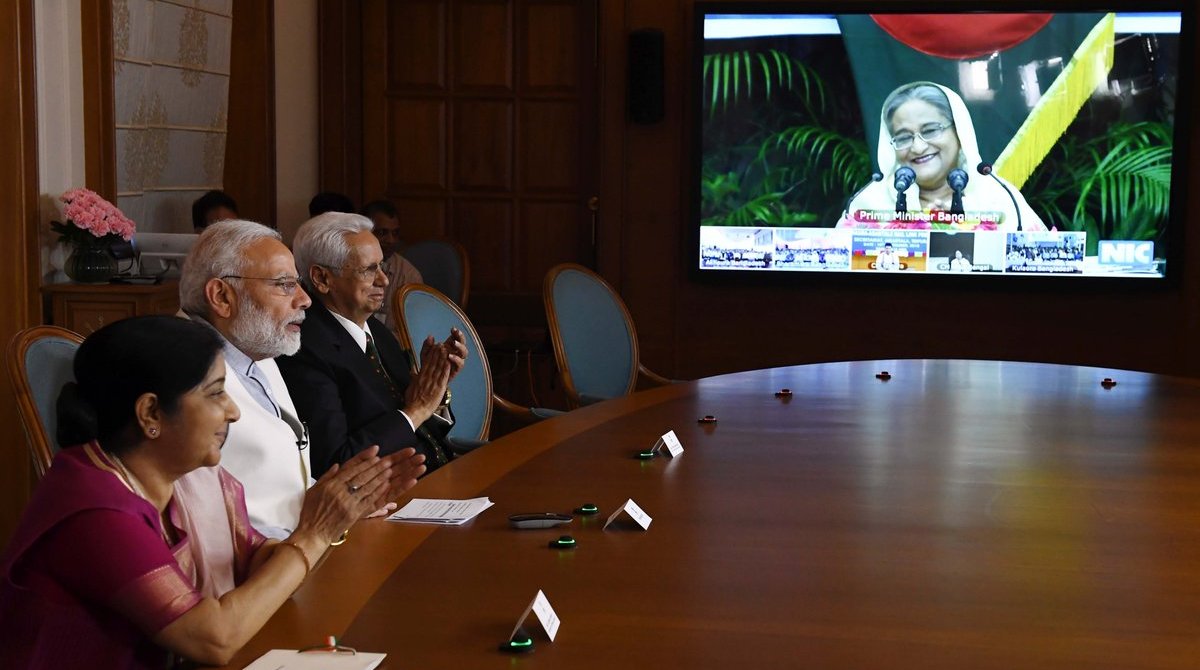In the immediate aftermath of the BIMSTEC summit in Kathmandu, there has been a degree of critical forward movement in India-Bangladesh relations. The choppy waters of the Teesta may not flow towards the eastern neighbour quite yet; a discussion on the most contentious issue is beyond the scope of a video-conference. Nor for that matter has there been much headway at the high table.
The chief import of Monday’s interaction between Prime Minister Narendra Modi, external affairs minister Sushma Swaraj , West Bengal Chief Minister Mamata Banerjee and Tripura Chief Minister, Biplab Deb, on the one hand and Begum Hasina on the other was the decision on three infrastructure projects in Bangladesh, and three months before the country goes to the polls.
Advertisement
Instead of pani ~ Didi to denge nahi ~ the Bangladesh Prime Minister will be in a position to boast before the electorate the supply of 500 MW of power from India via the grid at Bheramara (across the border) and Behrampore, the headquarters of Murshidabad district.
Notable also is the emphasis on connectivity, as envisaged during Mr Modi’s visit to Dhaka in 2015. On the anvil three years after is the railway link between landlocked Agartala and Akhaura, the latter a storm-centre in East Pakistan during the 1971 liberation struggle. This will lend an impetus to cross-border connectivity between the two countries. Not wholly unrelated is the bilateral initiative to revamp the Kalaura-Shahbazpur section of the Bangladesh Railways.
The striking feature must be the joint venture in the Railways ~ the lifeline of both countries. Both Delhi and Dhaka ought now to consider the revival of the railway link between Dhaka and Sealdah, one that still revives nostalgic memories among the pre-Partition generation. While Monday’s rail agreement will buttress trade and people-to-people ties, no less profound is what Mr Modi calls “power connectivity”.
A total of 1.16 gigawatts of power is now being supplied by India to Bangladesh. The increase, in the reckoning of the Prime Minister, signifies a “quantum jump from megawatts to gigawatts and is symbolic of a golden era” in bilateral ties. Markedly, Mamata Banerjee has pledged to raise the power supply to Bangladesh to 1,000 MW. Though electricity will not be a substitute for Teesta water, the plan to boost power supply will hopefully be approved in the wake of the Chief Minister’s talks with Mr Modi.
“On Monday, we increased our power connectivity and started two projects to increase our rail connectivity,” said the Prime Minister. And then the bow in the direction of technology ~ “When projects are launched via video link, they don’t get bogged down by timings of VIP visits.” By that token, Monday’s video-conference was far more fruitful than the jaw-jaw at the high table. Much has been achieved; much also alas has not.









